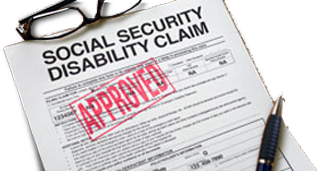Published on: November 10, 2016
 Becoming disabled is a terrible and difficult ordeal. To lose the ability to do the things you once could, the things you once enjoyed, is a terrible burden. Adjusting to this change takes time—but you still need to pay the bills and take care of yourself and your family.
Becoming disabled is a terrible and difficult ordeal. To lose the ability to do the things you once could, the things you once enjoyed, is a terrible burden. Adjusting to this change takes time—but you still need to pay the bills and take care of yourself and your family.
Social Security Disability Insurance (SSDI) and Supplemental Security Income (SSI) can help you pay for your needs, but there is a long filing process for each of these programs—one that many people don’t pass on their first try.
A rejection can be devastating, as you have to appeal the decision and wait for another adjudication. To reduce your risk of being rejected, it’s important to be prepared before your case is reviewed by the Social Security Administration.
What are some steps you can take to be prepared for filing a disability benefits claim?
Here are a few things you can do:
1: Assemble All of Your Medical Records
One of the most important things you can do to prepare for filing a disability claim is to assemble all of the medical evidence for your claim. Lack of medical evidence is an all-too-common reason for denial of benefits in cases where the applicant is clearly disabled.
Not only should you have medical records of your condition, you should gather any evidence you can showing that you’re following your doctor’s prescribed treatments—or documentation showing why you cannot follow the prescribed treatment.
This evidence could prove crucial to establishing that your condition meets the SSA’s medical guidelines for disability, such as:
- The condition will last a full year or more—or result in death—even with treatment.
- The condition will prevent you from working or engaging in “substantial gainful activity.”
2: Review Your Work History
SSDI is an insurance program that you fund through Social Security deductions in your paychecks. To qualify for SSDI, you must have a certain amount of time worked on the record—indicating that you’re insured under SSDI.
The SSA conducts two tests to see if you’re considered insured:
- The duration of work test. This test establishes a total lifetime value for how many years of work you need based on your age at the time you became disabled; and
- The recent work test. Which states how many years out of a given span of time (50% of the time out of the last 3, 6, or 10 years) you need to have worked to be considered insured.
There’s a long table in the SSA’s Disability Benefits publication that goes into more detail. Basically, the older you are the more years you will need to have worked to qualify for SSDI.
Note that these numbers are based on the age at which you became disabled—not your current age.
If you look at your duration of work history and recent work history from the time before you became disabled and find that you don’t meet the requirements, don’t give up. You may not be able to get SSDI, but you may still be eligible for SSI based on your condition—and SSI requires you to apply for SSDI first.
3: Consider Your Education and Investigate the SSA’s Ticket to Work Program
 Many disabilities may prevent you from doing one kind of work, but allow you to do other kinds of work based on your education and experience. For example, if you lose the ability to use your legs, that would prevent you from working most manual labor jobs but, if you had other education, you may be able to take a desk job that doesn’t require heavy labor.
Many disabilities may prevent you from doing one kind of work, but allow you to do other kinds of work based on your education and experience. For example, if you lose the ability to use your legs, that would prevent you from working most manual labor jobs but, if you had other education, you may be able to take a desk job that doesn’t require heavy labor.
The SSA has a special Ticket to Work program that helps disabled people find new work that accommodates their disabling condition.
This program can help you find meaningful and engaging work to help you more than SSI or SSDI alone can.
4: Talk to Your Friends, Family, Coworkers, and Doctor About Testifying Before the SSA
The SSA will want to talk to witnesses about your condition—including your friends, family, coworkers, and doctors.
Making these witnesses available to the SSA can massively improve the strength of your case.
Even better, staying in touch with friends and family can help you adjust to life after disability.
5: Review Your Finances
Some disability programs such as SSI have strict financial guidelines that must be met before you can qualify for them—such as not having more than a set amount of money in assets, limits on how much income you can have and still receive benefits, and more.
Reviewing your financial situation before applying for benefits can help you be a bit better prepared on your initial application and during any subsequent questioning about your application.
Optional Prep: Consulting with a Disability Advocate
One step that you can take if you want is to consult a disability advocate about your disability claim. While not necessary in many cases, consulting a disability advocate can help you prepare for your claim.
Sometimes an experienced Social Security advocate can help you spot something that’s missing from your claim; such as a specific piece of paperwork or medical evidence. An advocate may even be able to provide you with a realistic assessment of how likely your claim is to pass the SSA.
While helpful, you don’t have to consult with a disability advocate when you first file. But, if you’d feel more comfortable dealing with the SSA with some support, then advocates such as Disability Experts of Florida are here to help you through this often long and difficult process.

